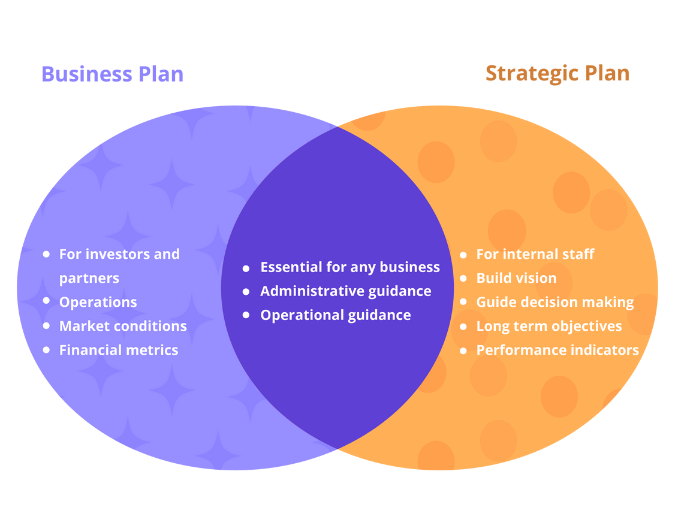How to Write a Business Plan: Step-By-Step Guide for Small Business Owners

A business plan defines a company’s goals and strategies. Businesses may develop a detailed written plan extending into dozens of pages or keep their business plan as simple as a short slide deck.
Make a Free Invoice NowWhat to Include
The elements to include in a business plan will vary depending on a company’s unique status and goals. Businesses seeking to attract investors should include comprehensive market research and financial projections to demonstrate expected profits. Lean startups, businesses owned and operated by families or individuals, and other small businesses may not need detailed market research and financial projections.
- Executive Summary: Introduces the reader to the company and provides a high-level overview of the overall business plan. This section should illustrate a compelling picture of the company’s potential for growth and success.
- Company Structure: Establishes basic details, including legal structure, leadership, location(s), and hours of operation (if applicable).
- Company Summary: Provides a more in-depth description of the company’s mission, products or services, and objectives. This section should address the problem the company seeks to solve and why it is uniquely positioned to do so.
- Competitive Analysis: Describes the company’s standing among its competitors, including types of competition, descriptions of specific companies that are similarly situated, and competitive advantages that help substantiate the company’s viability.
- Market Analysis: Analyzes the industry conditions and target market, including customer demographics and behaviors, demand, market size, and supporting statistics.
- Marketing Strategy: Explains how the company will attract customers and drive sales.
- Financial Outlook: Determines operating costs, funding needs, budget details, and profit projections.
Business Plan vs. Strategic Plan

Business plans and strategic plans are complementary but separate documents. Whereas a business plan provides a specific roadmap for achieving immediate to medium-term goals, a strategic plan defines a company’s broader objectives from a big-picture, longer-term perspective.
A business plan encompasses a company’s value proposition, market positioning, and financial metrics, while a strategic plan focuses on mission, values, and vision.
|
Business Plan |
Strategic Plan |
|
|
How Long Should a Business Plan Be?
The optimal length of a business plan depends on the type of business, the intended audience, and the plan’s purpose.
What is a Business Continuity Plan?
A business continuity plan prepares a company for potential threats. Implementing such a plan may include creating new security systems and training staff for emergency response and recovery protocols.
Businesses are vulnerable to various risks, from natural disasters to technology failures to crime. By implementing a business continuity plan, companies can take steps to safeguard their assets and prepare their staff and leadership to respond appropriately.
How to Write a Business Plan

Creating a business plan can be intimidating, but the process is invaluable for any business and can break down into manageable steps. By developing a thoughtful, well-researched business plan, business leaders can refine their idea, attract the right partners, and create a strong foundation for success.
Step One: Decide What Type of Business Plan You Need
Before sitting down to write a business plan, think through its purpose and intended audience. This process will set parameters for the plan development process by helping to determine the amount of research and time needed.
Is your business looking to attract investors or partner with financial institutions to raise capital? If so, set aside time for market research and financial projection modeling. Do the company’s leadership and staff need an operational guide to benchmark progress as the business grows? In this case, the business plan may focus more on vision, goals, and day-to-day processes, focusing less on in-depth metrics.
There is no prescribed format for a business plan, but deciding what type is most appropriate for your business will guide the content and length of the plan. A simple business plan might only take a few hours to assemble, while a traditional one requires comprehensive detail and considerable time.
Step Two: Create a Bulletproof Elevator Pitch
Regardless of your business plan, you must have a solid business idea that you can communicate in one or two sentences. Can you concisely state the need the company is fulfilling and why it’s uniquely positioned to do so? Take some time to define a crystal-clear elevator pitch. The pitch will serve as the foundation of the business plan.
Step Three: Outline, Research, Write, Refine
Now that you know what type of business plan to create, who the business plan is for, and what the business is setting out to accomplish, it’s time to write.
Get your hands on a template to provide a basic structure for the plan. Choose critical elements to focus on if you’re creating a simple plan. Create an outline first.
You might start by drafting an executive summary, introducing the plan, and expanding on each point in subsequent sections. Or, you might tackle the individual sections and draft the executive summary at the end.
Business Plan Outline and Examples
Creating a detailed outline will streamline and simplify the process of writing a business plan. Decide what sections will be included and break these down into subsections.
Example Outline
- Business Plan Confidentiality Agreement
- Executive Summary
- Introduction
- Problem/Need
- Solution
- Market Size
- Competitive Advantages
- Ownership & Management
- Funding
- Company Structure
- Overview
- Legal Structure
- Ownership
- Location
- Company Summary
- Company Description
- Products & Services
- Revenue: Pricing and Profitability
- Revenue Strategy
- Goals
- Milestones
- Keys to Success
- Competition & Competitive Advantages
- Competition
- Competitive Advantages
- Management Summary
- Management / Key Roles
- Personnel Plan
- Functional Roles
- The Market Size & Trends
- Local Demographics
- Target Market
- Marketing Strategy
- Marketing
- Web Plan
- Sales Strategy
- Positioning
- Pricing
- SWOT Analysis (optional)
- Strengths
- Weaknesses
- Opportunities
- Threats
- Funding
- Use of Funds/Costs
- Conclusion
- Appendix
- Financial Plan
- Other
Executive Summary Introduction Example
An executive summary distills a business plan’s highlights and essential elements into a brief introductory section. The reader should be able to glean exactly what’s included in the business plan from the summary and be convinced about the company’s viability.
Introduction
Maya’s Bagels is Orange County’s only New York-style bagel shop and deli. Conveniently located in the City of Irvine’s financial district, Maya’s Bagels serves customers craving an authentic east coast experience.
Sourcing the finest ingredients and using traditional methods, Maya’s Bagels are baked fresh daily alongside an assortment of gourmet schmears, smoked fish, salads, and sandwiches. What sets us apart? Our magic ingredient: authentic New York City tap water.


